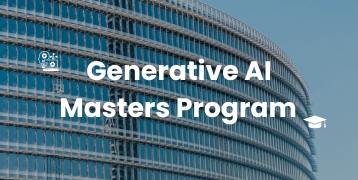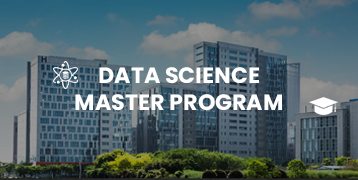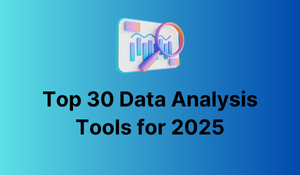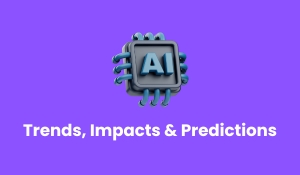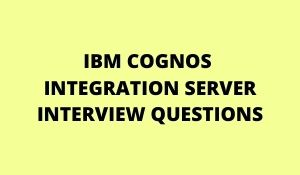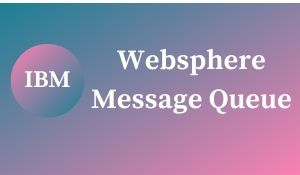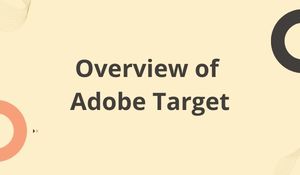
Introduction to Adobe Target:
Adobe Target is a content material trying out and personalization answer that makes it handy to perceive your high-quality content material through tests, and then supply the triumphing content material to the proper client at the proper moment. Adobe Target approves manufacturers to maximize income on the web, cellular apps, social media, and different digital channels.
How does Adobe Target work?
Learn how Adobe Target works, along with facts about the Adobe Experience Platform Web SDK and JavaScript libraries (at.js and mbox.js). This article additionally introduces several undertaking sorts you can create through the use of Target. You can additionally examine the Target area network, Search Engine Optimization (SEO), and how Target detects bots.
Target Platform Web SDKs and JavaScript libraries
Target integrates with websites with the use of the Experience Platform Web SDK or JavaScript libraries:
•Adobe Experience Platform Web SDK: The Experience Platform Web SDK is a new client-side JavaScript library. The Experience Platform Web SDK lets clients of Adobe Experience Cloud engage with many offerings in the Experience Cloud (including Target) via the Experience Platform Edge Network. Adobe recommends that all new Target clients put into effect the Experience Platform Web SDK.
•at.js: The at.js library is an implementation library for Target. The at.js library improves page-load instances for net implementations and gives higher implementation selections for single-page applications. at.js is up to date often with new capabilities. Adobe recommends that all clients that use at.js update their implementations to today’s model of at.js.
•mbox.js: The mbox.js library is the legacy implementation library for Target. The mbox.js library is no longer supported.
The following assets comprise specific facts to assist you put into effect the Experience Platform Web SDK or at.js:
Adobe Experience Platform Web SDK extension
Implement Target the use of Adobe Experience Platform
Each time a tourist requests a web page that has been optimized for Target, a request is dispatched to the concentrated system. The request helps to decide what content material to serve to that visitor. This procedure takes place in actual time. Every time a web page is loaded, a request for the content material is made and fulfilled using the system. The content material is ruled through the regulations of marketer-controlled things to do and experiences and is centered on the character web page visitor. Content is served that every website online tourist is most likely to reply to, have interaction with, or finally purchase. Personalized content material helps maximize response rates, acquisition rates, and revenue.
In Target, everything on the web page is part of a single journey for the whole page. Each ride can consist of more than one factor on the page.
Related Courses:
| Course Name | Enroll Now |
|---|---|
| Adobe Analytics Training | Enroll Now |
| Adobe Dynamic Tag Management Training | Enroll Now |
| Adobe Livecycle Es4 Training | Enroll Now |
| Adobe Fireworks Training | Enroll Now |
| Adobe Marketing Cloud Training | Enroll Now |
The content material that is displayed to site visitors relies upon the kind of undertaking you create:
•A/B Test: The content material that shows in a fundamental A/B check is randomly chosen from the experiences you assign to the activity. You can assign the visitor’s allocation percentages for every experience. As a result of this random splitting of traffic, it can take an extensive quantity of preliminary site visitors earlier than the percentages even out. For example, if you create two experiences, the beginning ride is chosen randomly. If there is little traffic, it’s viable that the share of traffic can be skewed towards one experience. As site visitors increase, the percentages equalize.
You can specify shared aims for every experience. In this case, a random range is generated and that wide variety is used to select the ride to display. The ensuing percentages may now not precisely shape the detailed targets, however extra site visitors capability that the experiences need to be broken up nearer to the goal goals.
•A client requests a web page from your server and it shows in the browser.
•A first-party cookie is set in the customer’s browser to keep purchaser behavior.
•The web page is focused on the system.
A Simple Guide to: Adobe Analytics Tutorial
Content displays based on the rules of your activity.
•Auto-Allocate: Auto-Allocate identifies a winner amongst two or extra experiences. Auto-Allocate routinely reallocates extra visitors to the prevailing experience, which helps to expand conversions while the take-a-look-at continues to run and learn.
•Auto-Target (AT): Auto-Target makes use of superior computer studying to pick out from more than one high-performing marketer-defined experience. Auto-Target serves the most tailor-made journey to every visitor. Experience shipping is primarily based on character consumer profiles and the conduct of preceding site visitors with comparable profiles. Use Auto-Target to customize content material and power conversions.
•Automated Personalization (AP): Automated Personalization (AP) combines provides or messages, and makes use of superior laptop studying to suit one-of-a-kind provide editions to every visitor. Experience transport is primarily based on character patron profiles to customize content material and pressure lift.
•Experience Targeting (XT): Experience Targeting (XT) offers content material to a precise target audience primarily based on a set of marketer-defined policies and criteria.
Experience Targeting, such as geotargeting, is precious for defining policies that goal a unique journey or content material to a specific audience. Several policies can be described in an undertaking to supply extraordinary content material versions to specific audiences. When site visitors view your site, Experience Targeting (XT) evaluates them to decide whether or not they meet the standards you set. If they meet the criteria, they enter the endeavor, and the ride designed for qualifying audiences is displayed. You can create experiences for more than one audience inside a single activity.
•Multivariate Test (MVT): Multivariate Testing (MVT) compares combos of affords in factors on a web page to decide which aggregate performs the best for a particular audience. MVT helps perceive which issue most affects the activity’s success.
Search Engine Optimization (SEO) pleasant tasting
Adobe Target aligns with search engine hints for testing.
Google encourages consumer testing. Google states in its documentation that A/B and Multivariate Testing do not damage natural search engine rankings if you comply with positive guidelines.
For greater information, see the following Google resources:
Website trying out and Google Search
Experiments and Cloaking
Guidelines had been introduced in a Google Webmaster Central Blog post. Although the put-up dates again to 2012, it stays Google’s most current declaration on the count number and the tips continue to be relevant.
•No cloaking: Cloaking is displaying one set of content material to your customers and a one-of-a-kind set of content material to search engine bots. Cloaking is finished via especially figuring out bots and purposely feeding them extraordinary content.
•Target, as a platform, has been configured to deal with search engine bots the same as any user. As a result, bots can be covered in things to do if the bots are randomly chosen and “see” the check variations.
•Use rel=“canonical”: Sometimes an A/B takes a look at the need to set up the usage of special URLs for the variations. In these instances, all versions must include a rel=”canonical” tag that references the unique (control) URL. As an example, think that Adobe is trying out its domestic web page for the usage of specific URLs for every variation. The following canonical tag for the domestic web page would go in the tag for every one of the variations:
•Use 302 (temporary) redirects: In the situations where separate URLs are used for the version pages in a test, Google recommends the use of a 302 redirect to direct site visitors into the check variations. The 302 redirect tells the search engines that the redirect is transient and is lively, solely as lengthy as the take a look at is running.
•A 302 redirect is a server-side redirect, and Target, alongside most optimization providers, makes use of client-side capabilities. Therefore, redirecting is an area where Target is now not utterly compliant with Google’s recommendations. This practice, however, influences solely a small fraction of tests. The widespread method for walking assessments via Target calls for altering content material inside a single URL, so no redirects are necessary. There are cases when purchasers ought to use a couple of URLs to symbolize their take a look at variations. In these instances, Target makes use of the JavaScript window. location command. This command directs customers to check variations, which does not explicitly signify whether or not the redirect is a 301 or 302.
•Adobe continues to seem to be for workable solutions to align with search engine guidelines. For these consumers who ought to use separate URLs for testing, Adobe is assured that the applicable implementation of the canonical tags mitigates the hazard related to this approach.
•Run experiments solely as lengthy as necessary: Adobe believes “as lengthy as necessary” to be as lengthy as it takes to attain statistical significance. Target offers high-quality practices to decide when you take a look at has reached this point. Adobe recommends that you incorporate the hardcoded implementation of triumphing exams into your checking-out workflow and allot the excellent resources.
•Using the Target platform to “publish” prevailing exams is no longer advocated as an everlasting solution. If the prevailing take a look at is posted for a hundred percent of customers one hundred percent of the time, this method can be used whilst the procedure of hard-coding the prevailing check is completed.
•It’s necessary to reflect on consideration on what you take a look at has modified as well. Simply updating the coloration of buttons or different minor non-text-based gadgets on the web page does not affect your natural rankings. Changes to textual content must be hardcoded, however.
•It’s additionally essential to think about the accessibility of the web page you’re testing. If the web page is now not available to search engines and was once in no way designed to rank in natural search in the first place, then none of the concerns above apply. An instance is a committed touchdown web page for an email campaign.
Customer Benefits:
Take omnichannel personalization to the masses: The quality experiences are persistently personal. Target gives a unified, modern profile to supply the quality journey through every channel.
Stop guessing with A/B and multivariate testing: Running remote exams in silos simply doesn’t reduce it. Instead, effortlessly take a look at the whole lot via each channel every time.
Improve every trip with AI-powered automation and scale: AI is essential to contemporary optimization. Test and customize to every visitor, applying synthetic talent with a single click.
HAVE A LOOK AT: ALTERYX FOR BEGINNERS
Conclusion:
Here you can learn all the Concepts regarding Adobe Target. Adobe Target Training is the best choice for those who prefer to acquire magnificent success in their career. GoLogica Provides the best Online Training Classes.
The education offers you hands-on experience and you will be working on a task to get a higher perception of how Adobe Target can be used to give up designing the environment.
👉 Related Articles:
🎯 What is the use of Adobe Analytics?
🎯 Adobe Analytics Key Business Requirements and Key Performance Indicators
🎯 Accounting for Payables Transactions in Fusion Applications
🎯 AEM Developer Interview Questions and Answers
🎯 Important Concepts of Adobe Marketing Cloud
🎯 Interesting things about Adobe Audience Manager
🎯 Updated Adobe Target Interview Questions and Answers
🎯 What Are Recommendations Activities? | Adobe Target
🎯 Basics Concepts Of Adobe Analytics Tutorial
Author Bio:
Priyanka Dasari is an expert writer at GoLogica and contributes in-depth articles on various Technologies. I’ve 2.5 years of experience in content writing and I’m passionate about writing technical content. Contact me Linkedin

